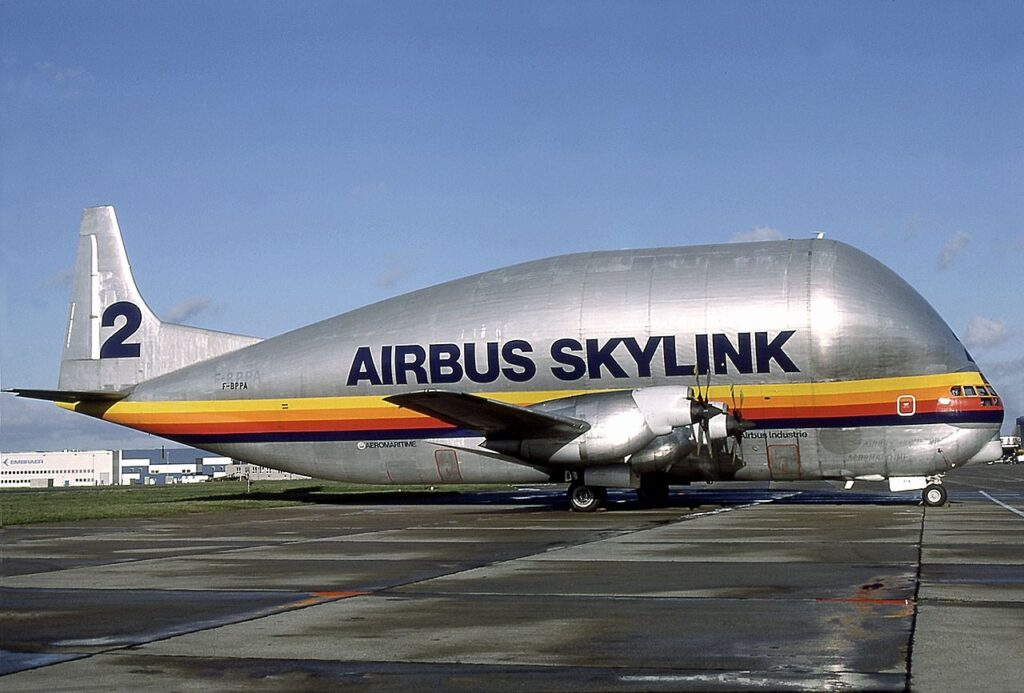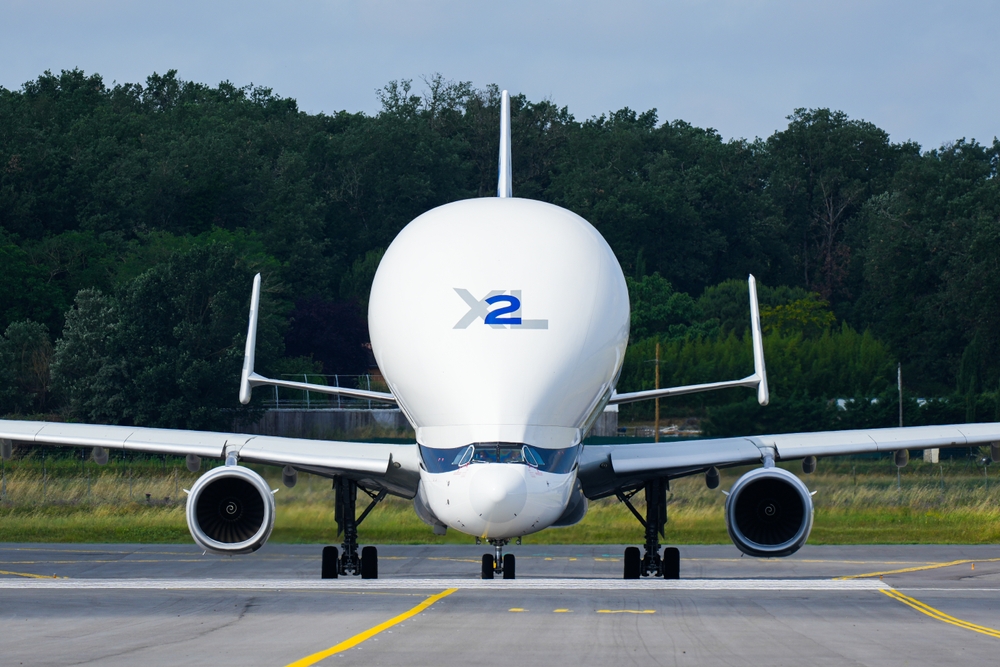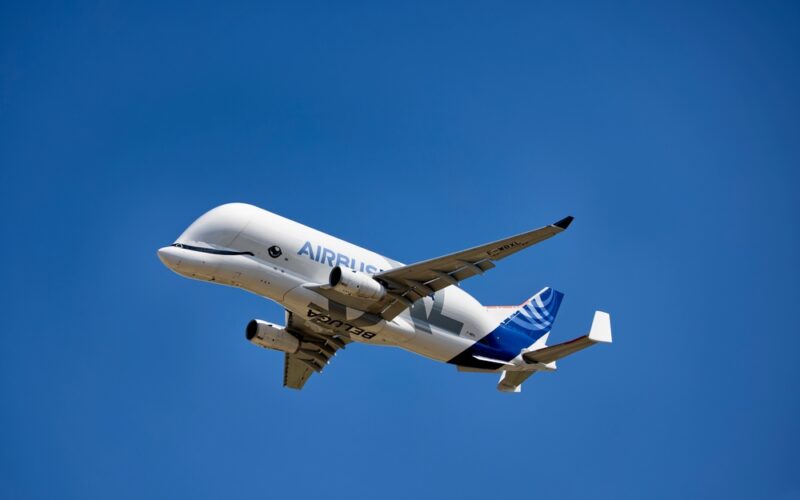The final Airbus BelugaXL oversized transport aircraft has finally entered commercial service, six years after its construction was completed. Having served as the BelugaXL program’s test platform since 2018, the last of six built BelugaXLs has joined five sisterships already flying for Airbus Transport International (ATI), an Airbus subsidiary that has effectively been acting as the manufacturer’s internal cargo airline since 1996.
This final handover to ATI marks the closure of the Airbus BelugaXL program which was originally launched in 2014. The Beluga XL was developed as a successor to the A300-600ST, the iconic original ‘Beluga’ freighter that was introduced to transport aircraft components to the company’s final assembly plants. The original Belugas themselves took over that role performed in the 1970s and 1980s by four Aero Spacelines Super Guppies – heavily converted Boeing (yes, Boeing!) Stratocruisers.

As is traditional for the first airframe to leave the assembly line, the first BelugaXL did not enter service immediately. Following its maiden flight, it served as the program’s test platform until 2023. According to Airbus, in four years, the aircraft has completed over 800 flight test hours during which pilots explored how the type handled the kind of operating conditions it would encounter when traveling between eleven European destinations.
Now, after a major refurbishment, the first aircraft is already an active part of the ATI fleet. The BelugaXL offers 30% more payload capacity than its A300-600ST predecessor and has been a crucial part of Airbus’ plan to ramp up production in recent years, a plan that is set to continue in the future as the planemaker strives to meet its obligations to countless airlines worldwide.
The development team for the BelugaXL was deliberately centralized upon its inception in 2014, bringing some 1,000 Airbus engineers and suppliers together in one location to expedite the development program. Parts, equipment, and design principles were re-used and borrowed from other Airbus platforms which assisted the BelugaXL going from the drawing board to its first flight in just five years.

The six specially commissioned BelugaXL transporters were each built at the Airbus final assembly plant in Toulouse, France, and regularly carry sub-assemblies and components between Airbus’ European manufacturing sites. Each mission averages a turnaround time of just 70 minutes, thanks to specially designed loading facilities at Airbus plants in France, Germany, Spain, and the United Kingdom.
Based on the A330-200 freighter, each BelugaXL has a payload capacity of 51 tons (112,435 lbs.) and a range of 2,200 nautical miles (4,075km). The aircraft is as long as two blue whales and as tall as a three-story office block, according to Airbus. The aircraft can accommodate the largest A350 fuselage section or two of the widebody’s 30-metre-long wings simultaneously.
ATI’s BelugaXL fleet is forecast to reach 9,500 flight hours annually by 2027, compared to a planned 6,500 flight hours in 2024. Furthermore, like its predecessor, the BelugaXL can operate with a blend of sustainable aviation fuel (SAF), helping Airbus reach its goal of steadily increasing SAF use in its internal air operations.
It’s expected that in 2024, the six aircraft combined will transport around 5% more payload compared to 2019’s mixed BelugaXL and Beluga ST fleet. ATI itself states that its fleet will emit 20% fewer carbon emissions in 2024, also compared to 2019.
ATI hopes to operate the BelugaXL for 30 years. The program’s production infrastructure (including construction jigs and tooling) is being decommissioned and committed to storage, just in case additional aircraft are needed in the future.

